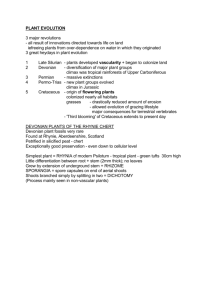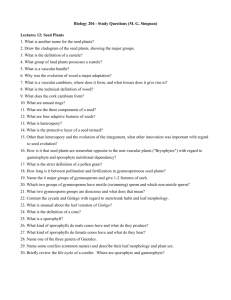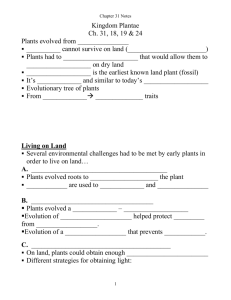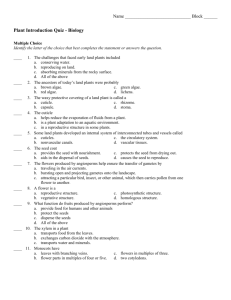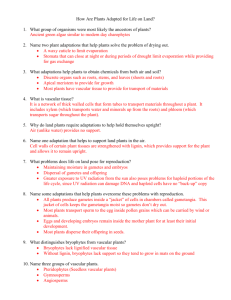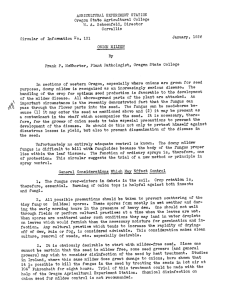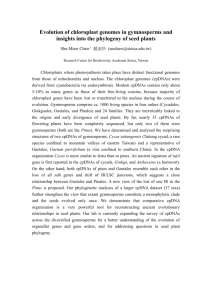Fossil Plants
advertisement
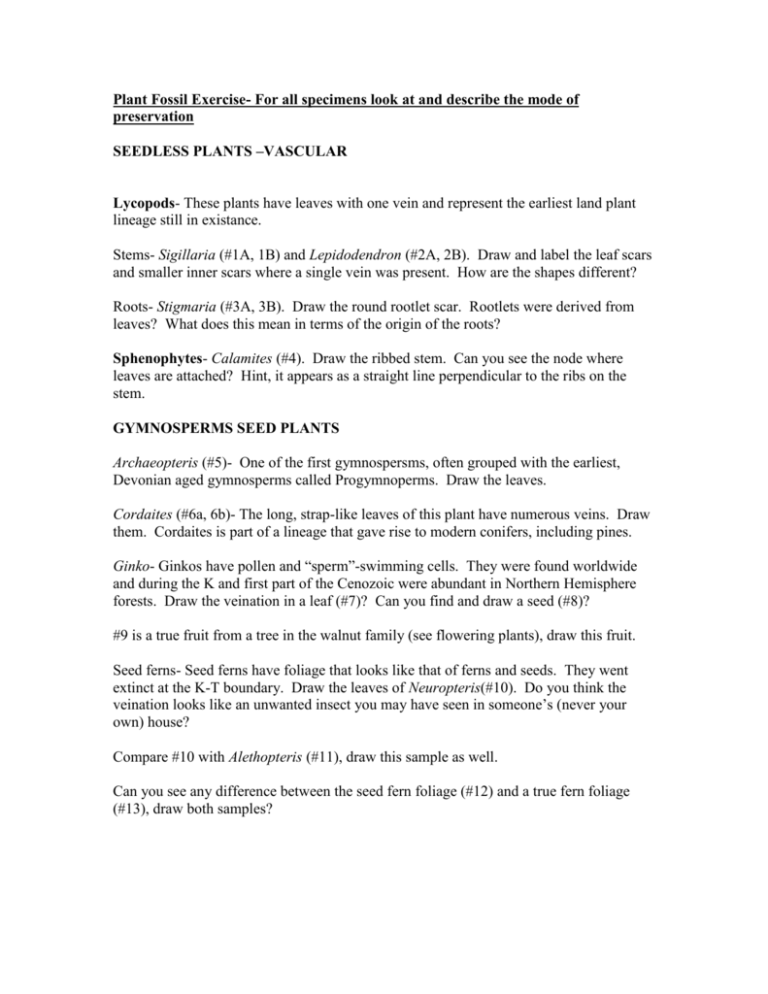
Plant Fossil Exercise- For all specimens look at and describe the mode of preservation SEEDLESS PLANTS –VASCULAR Lycopods- These plants have leaves with one vein and represent the earliest land plant lineage still in existance. Stems- Sigillaria (#1A, 1B) and Lepidodendron (#2A, 2B). Draw and label the leaf scars and smaller inner scars where a single vein was present. How are the shapes different? Roots- Stigmaria (#3A, 3B). Draw the round rootlet scar. Rootlets were derived from leaves? What does this mean in terms of the origin of the roots? Sphenophytes- Calamites (#4). Draw the ribbed stem. Can you see the node where leaves are attached? Hint, it appears as a straight line perpendicular to the ribs on the stem. GYMNOSPERMS SEED PLANTS Archaeopteris (#5)- One of the first gymnospersms, often grouped with the earliest, Devonian aged gymnosperms called Progymnoperms. Draw the leaves. Cordaites (#6a, 6b)- The long, strap-like leaves of this plant have numerous veins. Draw them. Cordaites is part of a lineage that gave rise to modern conifers, including pines. Ginko- Ginkos have pollen and “sperm”-swimming cells. They were found worldwide and during the K and first part of the Cenozoic were abundant in Northern Hemisphere forests. Draw the veination in a leaf (#7)? Can you find and draw a seed (#8)? #9 is a true fruit from a tree in the walnut family (see flowering plants), draw this fruit. Seed ferns- Seed ferns have foliage that looks like that of ferns and seeds. They went extinct at the K-T boundary. Draw the leaves of Neuropteris(#10). Do you think the veination looks like an unwanted insect you may have seen in someone’s (never your own) house? Compare #10 with Alethopteris (#11), draw this sample as well. Can you see any difference between the seed fern foliage (#12) and a true fern foliage (#13), draw both samples? FLOWERING PLANTS Paleobotanists use fossil leaves to determine past patterns in temperature and precipitation. If a flora has many leaves with toothed margins it was probably growing in a climate that was coller than a flora with more leaves with entire margins. Can you tell what the margins are like on the leaves found in the light clay (#14A-C)? Do you think they represent a cooler or warmer flora? For #15 why is it so hard to see the veins and margin compared to the different samples of #14? Draw this sample as well.
